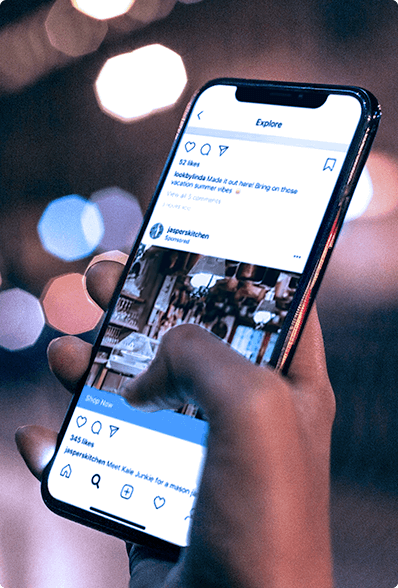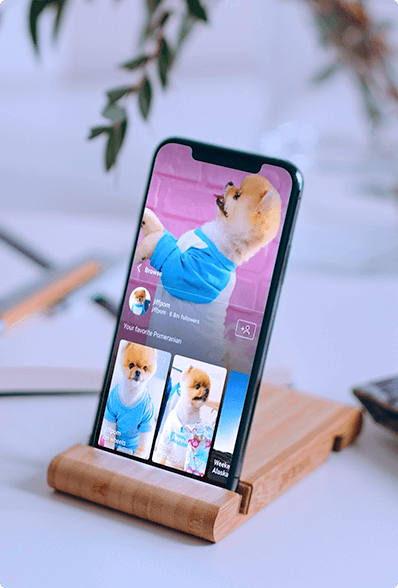In a year in which COVID-19 was just one of many disruptions to business as usual, 2020 dramatically impacted everyone.
And yet, 2020 was not just a year of negatives. Many businesses successfully adapted to various challenges throughout the year to come out stronger and more resilient than before. As 2020 introduced new habits or strengthened existing ones, savvy brands were able to successfully pivot to provide the best services and support possible considering the circumstances.
It will be these businesses that are poised to thrive in 2021 and beyond. While 2020 proved far more disruptive than anyone could have imagined, the habits and practices that became ingrained this year will very likely be here to stay for the foreseeable future.
So what, exactly, does the future hold? What can 2020 tell us about the next decade? That's what we aimed to uncover in this report.
CONSUMER
TRENDS
- OVERVIEW
- NORTH AMERICA
- ASIA PACIFIC




Just about everyone worldwide has been impacted by COVID-19 and other changes from 2020 in some capacity. Between the pandemic and other global political and societal shifts, consumers have been forced to adapt to a “new normal” as old habits and practices no longer sufficed.
But it is worth looking at how consumer trends from 2020 differ across the globe. In particular, we wanted to look at how people in North America versus those in the Asia-Pacific region differed in their approach to entertainment, shopping, communications and more. While there are definitely common through-lines for just about all global consumers, the trends in these two major regions from 2020 show how unique each market is and how each one is evolving.

A Digital, Hyperconnected Global Village
Largely as a result of the COVID-19 pandemic, what was once happening in person now occurs online. Instead of visiting movie theaters, people streaming movies on their connected devices. Instead of shopping at the store, consumers had just about everything delivered in 2020.
Of course, none of this is necessarily new or unique to 2020. After all, services like Netflix saw massive growth even before the pandemic struck en masse at the beginning of the year.
In this sense, 2020 is a harbinger for what’s to come in the decade to come. Even when COVID-19 is a distant memory, it’s easy to see how digital services will continue to drive how consumers worldwide connect with one another, shop, entertain themselves and truly conduct their lives. Truly, 2020 confirmed that the digital world is now firmly a key part of the real world.

Short Attention Spans, Shorter Videos!
Even though consumers worldwide spent more time than ever before indoors, their appetite for long-form video content didn’t necessarily grow. In fact, attention spans remained as short as ever!
This is a trend that very much predates 2020, and it will likely continue apace for much of the next decade. Seemingly as digital content consumption rises, attention spans seemingly go down.
Platforms like YouTube and TikTok have capitalized on this shift in consumer video content preference, rocketing to success in no small part on the backs of their library of highly engaging and consumable content. Going forward, expect more platforms to jump on this bandwagon. Beyond 2020, it’s easy to see a media landscape dominated by short-form video.

Using Mobile to Learn, Explore and Buy
For a long time, mobile was seen as the second screen. Yes, it was the on-the-go screen, but the main devices in the house were the television set and/or the main desktop. But 2020 showed how wrong this misconception really was – if it was ever right in the first place.
Throughout the year, even with many consumers staying at home, time spent using mobile rose to new heights. Even when consumers had multiple options at their fingertips, they still chose mobile.
It’s also important to note how mobile device usage changed. Increasingly, consumers were using their mobile devices to learn about new products and services, explore their options and even to make major purchases.
Mobile device usage globally has long been on the rise, and this growth showed no signs of slowing down in 2020. In the next decade, mobile will be even more central to all of our lives.
- 1 / 5
- 2 / 5
- 3 / 5
- 4 / 5
- 5 / 5

2020 has been an unforgettable year for consumers in North America – especially those in the United States. In addition to the unique changes wrought by COVID-19, 2020 has seen significant political and economic shifts that have impacted consumer behavior and feeling throughout the U.S.
American consumers have always differed from their global peers in terms of their habits and preferences, and that has definitely been the case in 2020. While others endured extensive lockdowns, Americans still had leeway to visit grocery stores, pick up food from restaurants and even visit certain indoor locations. And, of course, it’s important to look at how trends differed across different parts of the U.S., as each state and county had its own regulations, restrictions and mores.
Still, there is one area in which American consumers are like their global brethren: habits established in 2020 will likely continue well into the next decade.

A Digital, Hyperconnected Global Village
Digital consumption overall rose to new heights in North America in 2020. This year, eMarketer expects Americans to spend over seven and half hours on digital media, up over 45 minutes from 2019.
While the bulk of this digital time spent is devoted to mobile devices and apps, the biggest growth has come from the Connected TV space. Between 2019 and 2020, the average amount of time spent watching streaming video through CTV jumped from 39 minutes to 50 minutes. This year, close to half of all time spent watching streaming video content was through CTV.
This is unlikely to be a one-time fluke either. CTV viewing was growing steadily before 2020, but this year is poised to be the time when CTV viewership really takes off. Among the many changes in digital consumption patterns that occurred in the U.S. in 2020, CTV will be one of the longest-lasting trends.

A Digital, Hyperconnected Global Village



Short Attention Spans, Shorter Videos!
Short-form video will be a long-term trend in North America as well. While the biggest bet made on short-form video content fizzled out in 2020 (Quibi), the demise of Quibi is unlikely to be a harbinger of what’s to come on the video front. After all, YouTube and TikTok, among other channels, are more popular than ever in the U.S. and Canada.
So what can Quibi tell us about the future of short video content in North America? For one, it likely signals the growing importance of content quality. Video length can’t be a differentiator, as it’s now taken as a necessity. And just because a video is short doesn’t mean it can’t be engaging and be widely seen – far from it.

Using Mobile to Learn, Explore and Buy
In 2020, Americans spent more than four hours a day on average using mobile devices, according to eMarketer. In comparison, they spent under three hours and 50 minutes watching television.
This changing dynamic can’t be attributed to just 2020 though. In fact, Americans were spending more time using mobile devices than they were watching TV starting in 2019.
This proves that mobile truly has staying power in North America. While the U.S. historically has not been a mobile-led market, 2020 shows that this transformation is well under way.
And as InMobi’s data from 2020 shows, Americans use their mobile devices in a wide variety of ways, including to browse and buy retail items. In the U.S., mobile is clearly now the first screen of the house – and this is unlikely to change anytime soon.

Using Mobile to Learn, Explore and Buy


- 1 / 6
- 2 / 6
- 3 / 6
- 4 / 6
- 5 / 6
- 6 / 6

2020 has been a cataclysmic year for individuals across Asia-Pacific. The region was one of the very first to be hit by the pandemic, leading to swift action taken by different governments. With different regions going into strict lockdowns at various points in the past year, consumers across Asia-Pacific spent significantly less time outside their homes, thereby increasing their digital footprint.
Yet as restrictions began to ease, early adaptation turned into formative consumer behavior. Be it entertainment (gaming, watching movies etc.), shopping, making payments, or connecting with loved ones, Asia-Pacific continued to meet their needs online, especially on mobile.
This clear demand for mobile-first services from consumers paves the way for APAC's super-app race, the only region across the globe that has true skin in the game. Recognizing this shift, some of APAC's largest legacy brands are making significant investments and are wagering on the power of the always-on device to win over the connected consumer.

A Digital, Hyperconnected Global Village
Over the past decade, increasing globalization, better connectivity, and technological advancements have brought the world closer as a digital, hyperconnected global village. And even during the epoch-shifting pandemic, this hyperconnected global village was in it, together!
India’s monthly active internet user base surged to 639 million by the end of 2020, registering an annual growth of 24%. During the same period, Southeast Asia accounted for over 400 million Internet users, while over 86.5% of Australia's population is now online.
Consumers across APAC accounted for 25% of global app downloads across the globe in 2020, making these regions home to some of the most popular and exciting app revolutions, be it short-form video, gaming, or payments.

Short Attention Spans, Shorter Videos!
Asia occupies a unique seat on the world stage as a confluence of Eastern and Western tech media giants. Be it Snap, TikTok, or Reels, these apps have all enjoyed immense popularity and have been downloaded more than 200 million times in the region alone.
Additionally, homegrown players such as Likee and Roposo are making significant inroads on the world stage. Despite the short nature of these videos, they drive deep engagement with users. The average time spent on short-form apps per user is close to an hour, standing at 52 minutes.
The platforms are built on easy to share snackable content, comfortably lending themselves to virality and cross-pollination among other platforms as well. Recognizing this change in tide, traditional media houses are also rethinking their content strategy to better suit this new world order.

Using Mobile to Learn, Explore and Buy
Owing to the pandemic, SEA’s e-commerce economy has majorly accelerated to US $62B in 2020 due to newly formed online habits. On the other hand, India’s e-commerce revenue is expected to jump from US$ 39 billion in 2017 to US$ 120 billion in 2020, growing at the highest annual rate of 51% in the world. Australia on the other hand boasts of an impressive USD 1157 average annual revenue per user (APRU) with over 70% of the nation’s population making online purchases.
The customer journey in Asia-Pacific is not what it used to be: one no longer sees a TV ad, walks into the store, and buys a product. According to a survey conducted using InMobi Pulse, 2 in 3 respondents across Southeast Asia claim to use their mobile to learn about and discover new products, 82% to research and explore, and over 60% to make purchases. Similarly, 63% of respondents in India claim to use their mobile to learn about and discover new products, 77% to research and explore, and 62% to make purchases. There is one constant in their shopping journey: the mobile to learn, explore, and to buy.
- 1 / 4
- 2 / 4
- 3 / 4
- 4 / 4
MARKETING
TRENDS
- OVERVIEW
- NORTH AMERICA
- ASIA PACIFIC

If 2020 has been a strange and harrowing year for consumers, then double that for marketers. In the midst of widespread uncertainty and change, how were marketers supposed to adapt and thrive?
As the year showed, how marketing was supposed to function changed entirely. Tone, reach, mediums, etc. all had to change depending on current conditions.
But of course, some marketers thrived while others floundered. In 2020, what set apart the good marketers from the bad ones was an ability to adapt and pivot on a dive, using data and insights to make smart decisions in the moment.
This was true of all good marketing before 2020, and it will definitely be true for the foreseeable future. The muscles that marketing flexed this year will be utilized over and over again in the coming decade.

Achieving Digital Marketing Maturity: The Struggle is Real
Back in March and April, a comic was making the rounds on LinkedIn. It went something like this: Who is leading digital transformation at your organization? A) The CEO B) The CMO C) The CTO or D) COVID-19. The joke is that while companies have long talked about and championed digital transformation, at many businesses it didn’t happen until it was forced upon them by the pandemic.
For marketers in particular, it has been difficult to see success when the economy fluctuates and when tried-and-true marketing tactics like conferences are no longer on the table. 2020 laid bare the discrepancies between what marketers wanted to do and what they were actually capable of doing.
Nevertheless, most marketers were able to adapt to some extent. And the lessons learned in 2020 about digital marketing will pay dividends in the years to come.

The Future of Mobile Advertising is Programmatic
As Scott Kelliher, Head of Brand Advertising and Partnerships at eBay Ads noted in November, marketers have now “realized they need to stay increasingly flexible with how they buy their media, the way that they set and think about their marketing plans. And I don't see that going away. At any point in the future like that, that desire for flexibility is going to be a driving force for quite a while.”
It is this drive for more flexibility, along with a desire to move fast and have accurate, data-led insights, that is leading programmatic channels to new heights. While the continued growth of programmatic advertising overall and programmatic in-app advertising in particular is not a new story, this method of ad buying was ascendant in 2020 and will the default mechanism for years to come.

The Future of Mobile Advertising is Programmatic



Playing to the Gallery with Mobile Video
As time spent on mobile rises, marketers are finding it increasingly difficult to break through the noise and have their message heard.
This is largely why mobile video advertising is on the rise globally. Video ads are eye catching, engaging and frankly hard to ignore. This kind of advertising has long dominated television, so it makes sense that videos are ascendant on mobile too.
Plus, mobile video advertising, unlike linear TV advertising, is addressable and interactive. Savvy marketers are already pouring an increasing share of their budgets into mobile video advertising, and this trend will continue apace for the foreseeable future.

The Rise of the Growth Marketer
All marketers want to measure success. Even if they’re just measuring the number of people reached or the number of people who engaged with an ad, measurement is now part and parcel of all marketing campaigns.
But savvy marketers are taking this mindset to its next logical conclusion: growth marketing. In short, growth marketing describes any marketing efforts that are designed to help expand the business and improve its bottom line.
For too long, marketing has been focused solely on soft metrics. That era of marketing is slowly but surely coming to an end, as digital channels make it easier for marketers to quantify their effectiveness and drive results that truly matter to the business overall. Expect growth marketing to take up a bigger piece of the marketing pie in 2021 and beyond.

The Quest for Mobile-First Consumer Intelligence
As Scott Kelliher, Head of Brand Advertising and Partnerships at eBay Ads recently noted, “we're interested in going where our customers want us to go.” And increasingly, that final destination is mobile.
But while it’s one thing to know that your target consumers are on mobile, it’s another thing entirely to fully understand their mobile habits and interests. For brands new to the world of mobile marketing, it can still be a black box.
For more clarity, savvy marketers are increasingly seeking out mobile-first consumer intelligence. As marketers become more familiar with the mobile and in-app worlds, they are realizing that their old methods to gather insights no longer cut it. When consumers make decisions in record speed, waiting multiple months to get back the results of a survey that may or may not have been well designed in the first place simply won’t cut it.
- 1 / 7
- 2 / 7
- 3 / 7
- 4 / 7
- 5 / 7
- 6 / 7
- 7 / 7

On top of everything else happening in the world in 2020, marketers in the U.S. also had to deal with a fractured political climate, including from the Presidential election and Black Lives Matter protests over the summer.
U.S. marketers have always had to be flexible in some degree, changing their approach depending on where their audience was located, what they cared about, etc. Throughout the year, the best marketers in North America turned to available data and insights to make high quality real-time decisions. Speed and agility were the name of the game in 2020.
This will continue to be crucially important to marketers in the U.S. over the next few years, as third-party cookies disappear from Google Chrome and as Apple depreciates the IDFA in iOS. Of course, for good marketers, adapting to a variety of challenges has always been the name of the game.

Achieving Digital Marketing Maturity: The Struggle is Real
Besides the pandemic, digital marketers were dealt two big blows in 2020: 1) Google announced that it would eliminate third-party cookies on Chrome by 2022 and 2) Apple said they would be making the mobile ad identifier explicitly opt in sometime in 2021.
This presents major headwinds for digital marketers. Being able to accurately identify key audiences has long been the hallmark of successful digital advertising and marketing. Without these key features, marketers may be left in the dark.
And then there are the legal challenges. The California Consumer Privacy Act technically went into effect in 2020, and then voters later in the year approved the California Privacy Rights Act.
Between both the technical and legal changes to the status quo, digital marketers are in for a bumpy ride in the coming months and years.

The Future of Mobile Advertising is Programmatic
The United States continues to be the dominant programmatic market worldwide, with 82% of all programmatic ad spending on InMobi Exchange coming from the U.S. during the first half of 2020. Remarkably, U.S. in-app programmatic ad spending actually grew 75% between the first half of 2019 and the first six months of 2020.
It’s easy to see why programmatic advertising is increasingly popular in North America. In a crowded, omnichannel marketplace, marketers need to spend their budgets wisely. With programmatic, they are able to target specific segments of consumers in real time through unique data-led insights.
In short, programmatic advertising just works. It’s hard to argue with results.
Over 80% of this programmatic in-app ad spending occurred through open exchange buying in the first half of 2020, with just 17% coming from private marketplace deals. In addition, 79% of all in-app programmatic ad spending went towards banners.

The Future of Mobile Advertising is Programmatic



Playing to the Gallery with Mobile Video
Programmatic video advertising is on the rise in North America, with the U.S. leading the charge. Between the first half of 2019 and the first half of 2020, programmatic in-app video advertising was up 30% in the U.S..
Why is video advertising growing here? Because it’s effective. In the first half of 2020, video ads had an average click-through rate that was 12x greater than for banners.
Mostly, advertisers seem to prefer horizontal video ads over vertical video. During the first six months of 2020, 64% of all programmatic in-app video ads were horizontal. And, horizontal video ads had an average video completion rate that was over 38% higher than the average VCR for vertical videos.
But we don’t expect this trend to last. In the future, expect marketers to produce and develop more vertical video ads that provide a truly mobile-first viewing experience.

Playing to the Gallery with Mobile Video



The Rise of the Growth Marketer
At this stage, pretty much every marketer in the U.S. is a growth marketer. This was especially the case in 2020, as the pandemic upended what was possible and forced both companies and their marketers to make hard choices. When companies are in a tight spot, they need all hands on deck to support the bottom line.
Of course, growth marketing was critical in the North American market long before COVID-19, especially as direct-to-consumer (D2C) selling rose in popularity. But now at the end of 2020, even brands like Hershey’s and Kellogg’s are embracing D2C selling and forging more direct lines of communication with consumers in the name of growth.
Expect this trend to continue apace in North America in the months and years ahead. Once businesses start seeing the light and realize how impactful marketing can be for the business, they’ll be no turning back.

The Rise of the Growth Marketer



The Quest for Mobile-First Consumer Intelligence
“From an advertiser perspective, it's been really interesting to see how advertisers have changed their behaviors, and how speed and flexibility in the types of data they've been looking for has changed,” Scott Kelliher, Head of Brand Advertising and Partnerships at eBay Ads, recently noted. He added that “marketers are inherently curious about the data.”
This is especially the case in the realm of mobile marketing. 2020 has made marketers go out of their comfort zones and move faster than ever before. But any smart move has to be underpinned by good data. Without it, marketers are basically taking a shot in the dark.
Gathering good mobile-first data will be harder in the future though, as IDFA is depreciated and as CPRA takes effect. But good marketers will adapt and cope in 2021 and beyond, just like they had to in 2020.
- 1 / 9
- 2 / 9
- 3 / 9
- 4 / 9
- 5 / 9
- 6 / 9
- 7 / 9
- 8 / 9
- 9 / 9

In this section, we examine the year that was and discuss key trends that will shape marketing strategies for years to come across both Southeast Asia and India. This rapid shift in consumer behavior has not gone unnoticed by marketers across the region, with several brands now focusing on their Mobile Marketing Maturity (3M). Marketers are setting higher bars for themselves by closely measuring the impact of each marketing activity, as they move from being aspirational to driving actionable mobile marketing strategies.
While this may be a tough time for marketers not only in the region but across the globe, true innovation is born from adversity. We have observed, from close quarters, as resilient brands have pioneered innovations that enable them to pivot, strategize and execute in the new normal.

Achieving Digital Marketing Maturity: The Struggle is Real
First brought to light by BCG, DMM is an organization’s capacity in delivering seamless brand experiences and is characterized by four maturity levels: Nascent, Emerging, Connected, and Multi-moment.
According to an InMobi survey, e-commerce and BFSI segments lead the way when it comes to Digital Marketing Maturity, emerging as the more connected and multi-moment marketing industries. Yet over close to half of the marketers characterize themselves in the Nascent or Emerging stage, leaving a large room for organizational growth.
The pandemic has marketers pivoting their plans to be more digitally focused. 87% of marketers will increase their investments in in-app advertising by up to 40% and programmatic buying remains the most efficient channel for marketers to reach and engage audiences in a brand-safe environment.

Achieving Digital Marketing Maturity: The Struggle is Real



The Future of Mobile Advertising is Programmatic
Programmatic advertising has witnessed an exponential rise from 55.9% in 2017 to an estimated 72% by 2021. Asia-Pacific and specifically, India are key growth markets for programmatic advertising with an expected 5-year growth of 2X and 3X respectively. The future of programmatic advertising in Asia will be shaped by:
- Video-on-demand: Users are consuming content on OTT apps through content platforms such as Prime Video, Netflix, True, Pops Worldwide, and Disney+. Advertisers must leverage video platforms to leverage the micro-moments of the consumer journey and design personalized brand interventions.
- Header Bidding: Header bidding, as an ad technology, has evolved from being an unfamiliar concept to a mainstream mechanism over the past few years. Header bidding has both sell-side and buy-side advantages over app inventory that’s mediated through a traditional waterfall model.
- Supply Path Optimization: With the extensive fragmentation of the programmatic advertising ecosystem, advertisers often have limited visibility into the costs and ad placements. SPO aims to remove inefficiencies in the programmatic supply chain by eliminating intermediaries.

The Future of Mobile Advertising is Programmatic



Playing to the Gallery with Mobile Video
The world is amid a technological upheaval with an exponential rise in video viewing on connected devices including smartphones, tablets, and Smart TVs. Despite the consumption explosion, advertisers are yet to master playing to the gallery with mobile video.
The reason for this is simple. The underlying approach and technology powering video ad experiences on modern devices widely stem from the TV or desktop era. Unlike desktop, users spend 90% of their mobile device time in-app. The inherent nature of mobile devices makes them perfect for delivering immersive video messaging with relevant brand actions to a consumer’s current location and mobile context. By leveraging the combined power of sight, sound, and touch, mobile devices can now deliver personalized ad experiences that allow brands to truly differentiate themselves in a cluttered space.

The Rise of the Growth Marketer
To succeed in this new age of the digital consumer and crowded app ecosystem, Growth Marketers have two primary weapons in their arsenal: data and their existing customer base. The massive amount of data will need a quantitative aptitude coupled with a deep understanding of user behavior to retain and grow the customer base.
According to AppsFlyer data, $945M was exposed to app install fraud in APAC in H1 2020 alone. Hence, performance marketers should look to leverage robust fraud protection tools for real-time fraud detection and blocking.
Peter Drucker is often quoted as saying that “you can't manage what you can't measure.” Performance marketers must invest in the right tools for their marketing tech stack to collect, attribute, and analyze all user activity data across paid and owned channels. This is even more critical in 2021 as performance marketers battle it out to capture the burgeoning digital natives’ mindshare and achieve marketing efficiency.

The Quest for Mobile-First Consumer Intelligence
In a world that is rapidly evolving, brands are finding it increasingly difficult to keep up with the constantly changing preferences of their consumers. Even as consumers have struck a balance between the physical and digital world, it has not been the same for brands.
A problem well understood is a problem half-solved. The solution to bridge the widening gap between brands and their consumers is meaningful data across all touchpoints that lead to actionable insights. Brands need to invest in mobile-first AI-powered solutions that access real-time data signals from users and combine them to provide out-of-the-box analytics.
To gather actionable consumer insights from time to time, brands must invest in a sustainable approach. Using a mobile-first platform, brands can stay in touch with the evolving consumer needs by capturing the real voice of the customer. The mobile is the ultimate means to understand and identifying prospective customers while shaping how to engage and acquire them.
- 1 / 8
- 2 / 8
- 3 / 8
- 4 / 8
- 5 / 8
- 6 / 8
- 7 / 8
- 8 / 8
INDUSTRY
TRENDS
- OVERVIEW
- NORTH AMERICA
- ASIA PACIFIC

Every industry vertical has been impacted by the events of 2020 in some capacity. On one hand, you have airlines and the travel industry, which have been utterly decimated by COVID-19. On the other hand, you have the video-on-demand space, which has seen record growth with consumers largely confined to at-home entertainment options.
It is worth diving into what has happened in different industries in 2020, to see how the trends observed in this pivotal year will dictate the future trajectories for these businesses in the coming decade.
We also wanted to look at the state of different industries in 2020 in two major geographies: North America and the Asia-Pacific region (APAC). As these two critical global markets evolve, we wanted to see what was happening in different corners of the world and what the trends of 2020 can tell us about the future.

Mobile Gaming
With consumers spending more time inside than ever before, they needed a source of entertainment. And for many, that need was met by mobile gaming apps. Of all industries, perhaps none has seen as much growth as the mobile gaming space. According to Reuters, annual mobile gaming revenues will equal more than $159 billion by the end of 2020.
On one hand, this growth is hardly surprising. After all, mobile gaming was growing at a rapid pace even before 2020. And yet mobile gaming’s growth in 2020 is still highly noteworthy.
This trajectory shows that 1) mobile gaming truly has a wide audience beyond young men and 2) people turn to games for entertainment beyond their work commutes. In the next few years, it’s easy to see mobile gaming becoming the top source of entertainment for billions of people worldwide.

FMCG/CPG
The fast-moving consumer goods (FMCG) space, which is also known as the consumer packaged goods (CPG) industry in North America, has had a tumultuous 2020. For one, demand has shifted wildly throughout the year, as consumers went from hoarding toilet paper to buying up baking supplies to stocking up on snacks and dried goods. Meeting this ever-shifting demand has been more difficult than before too, as supply chains were stretched to the brink. And, of course, getting goods in the hands of consumers was challenged by the severely lowered demand for in-store shopping options – when this was even an option, of course.
The best brands were able to pivot in 2020 by forging more direct connections with consumers. In the future, it’s easy to see companies in this vertical forgoing their traditional distribution channels in favor of e-commerce and DTC shopping.

Retail
In 2020, the biggest change was in how consumers shop. E-commerce is hardly a new concept – the likes of Amazon, Flipkart, Rakuten and Myntra are proof positive of this – but it has really taken off in 2020. After all, for much of the year, it really was the only to shop.
Still, despite the growth trajectory of e-commerce, the retail space faces headwinds. Many brands still make the bulk of their sales from brick-and-mortar sales, and are a long way from having an owned-and-operated e-commerce store that’s profitable. Plus, in some retail categories, consumers still prefer to shop in person.
In the future, the top retailers will fully embrace a wide variety of shopping options, including e-commerce. For retailers to survive and thrive in 2021 and beyond, they need to offer variety and choice.

Media & Entertainment
How did we all entertain ourselves in 2020? Largely the same way we all entertained ourselves in 2019: by streaming video content. Services like Netflix and YouTube were wildly popular before, and continued to be so this year.
What was different in 2020 was that consumers had limited options for entertainment. Outside of China, movie theaters were closed, concerts were cancelled and live sporting events were postponed.
For media and entertainment studios, content production and content delivery were dramatically altered. In 2020, movies like “Trolls: World Tour” made big bucks while ever being shown in a theater, while “Tenet” failed to meet expectations.
2020 has exposed two main lessons: 1) people really like digital, at-home entertainment, and their appetite for this has not yet reached its peak and 2) consumers care about content quality first and foremost. Expect companies to take these lessons to heart in 2021 and beyond.

Delivery
With physical stores and restaurants largely closed for in-person service, delivery has seen a renaissance in 2020. This year, consumers had everything from alcohol and meal kits to household cleaning supplies and cooked meals delivered straight to home, foregoing in-person shopping.
Just consider the fate of Uber in 2020. After all, without Uber Eats, what would the fate of the company have been this year?
It’s easy to see this trend continuing well past 2021. As consumers become more comfortable with home delivery, why will they bother with the hassle of in-store shopping or even pickup?
One of the interesting trends in this space is not only the growth of third-party delivery services like Instacart and Swiggy, but also the rise in brands offering their own delivery services and support.
In the coming decade, expect more brands to offer their own delivery offerings to ensure total oversight over the entire supply chain.
- 1 / 6
- 2 / 6
- 3 / 6
- 4 / 6
- 5 / 6
- 6 / 6

2020 has been a year for the ages for just about every industry across the United States and Canada. Considering the pace at which change occurred in 2020, it’s useful for every industry to take a step back and really take stock of what happened – and what’s to come. What trends from 2020 are likely to stick around versus what will be an aberration?
For different industries, the answers vary.

Mobile Gaming
According to eMarketer, there are close to 155 million smartphone gaming app users in the U.S. This means that over 46% of all Americans are mobile gamers. And there is still room for this space to grow in the U.S. By 2024, eMarketer predicts that there will be more than 163 million smartphone gaming app users in the country.
For advertisers, this audience is now simply too big to ignore. Not only is the smartphone gaming audience growing rapidly still, but InMobi’s research definitively shows that it is far more diverse than some might think – most casual mobile gamers are women over the age of 25. Going forward, mobile gaming will continue to dominate the app charts. Like their global peers, Americans love playing games on their mobile devices, and this trend will definitely continue throughout the decade to come.

Mobile Gaming



FMCG/CPG
What a difference a year makes. Back in late 2019, Vinny Rinaldi, Head of Addressable Media and Technology at The Hershey Company, said that they were unlikely to embrace e-commerce and consumer-direct shipping anytime soon. After all, chocolate easily melts in transit, making it a difficult item to ship.
And then COVID-19 hit. As their in-store sales dipped as a result of the pandemic, they made up for this loss by further embracing online sales. The second half of 2020 even saw them partner with retailers like Walmart to provide additional online shopping options to consumers.
While e-commerce may not have been part of the Hershey’s initial 2020 plan, it will likely be a part of their 2021 plans – and they’re far from alone in this pivot. Going forward, expect more CPG brands in North America to embrace DTC shopping options, as habits formed in 2020 calcify.

Retail
Unlike in some other parts of the world, e-commerce and online delivery were still available options to Americans throughout 2020. This helps to explain why shoppers in the U.S., perhaps more than anyone else, really embraced e-commerce this year. In fact, according to research conducted by IBM, “the pandemic has accelerated the shift away from physical stores to digital shopping by roughly five years.”
Another interesting shift in the North American retail landscape has been the rise of BOPIS: buy online, pick up in store. Many consumers have embraced this buying model in 2020, as it provides the ease of e-commerce without any of the shopping hassles. Target invested in improving their BOPIS infrastructure in 2019, and this move helped them quickly capitalize as shopping trends and preferences shifted in 2020.

Media & Entertainment
One of the defining characteristics of the entertainment landscape now in North America is just how crowded the market has become. Case in point here is Quibi, which started and ended in 2020 despite its cache of starts, immense budget and pedigreed founders. In fairness to Quibi, however, even established sports leagues like the NBA had trouble generating significant viewership in 2020 as a result of pandemic-related delays and the attention-sucking vortex that was the 2020 U.S. Presidential Election.
Over the next few years, as Americans begin to return to some sense of normalcy, what habits from 2020 will stick? For one, connected television (CTV) viewing is here to stay. As we’ve noted previously, between 2019 and 2020, the average amount of time spent watching streaming video through CTV jumped from 39 minutes to 50 minutes, according to eMarketer. This year, close to half of all time spent watching streaming video content was through CTV.

Media & Entertainment



Delivery
While consumers across the U.S. have been using delivery services at a rapid clip in 2020 for retail and restaurant meals just like others across the world, what’s unique about North American consumers in particular has been the rise of food and grocery delivery. As InMobi’s research has consistently shown this year, consumers in the U.S. have been flocking to services like Instacart, Shipt and Drizly in near-record numbers since March.
Supermarkets went all-in on this trend in 2020, with Walmart rolling out a new app and brands like Kroger and Safeway seeing more app installs than ever before.
2020 also brought renewed life to the delivered meal kit space. Services like Blue Apron appeared to be on their last legs in 2019, but then COVID-19 hit and these services saw a rush of new subscribers.
Will this trend actually last though? Only time will tell.
- 1 / 8
- 2 / 8
- 3 / 8
- 4 / 8
- 5 / 8
- 6 / 8
- 7 / 8
- 8 / 8

As consumers across Asia made dramatic shifts in their behavior, different industries responded differently. And one truth has emerged: mobile is the anchor for both consumers and brands in this sea of the unknown. Several brands have pivoted admirably to meet their consumers where they are – be it embracing m-commerce, building click to mortar capabilities, or creating custom mobile experiences, brands have prioritized the needs of their consumers above all.
Industries have had to consider several options as they prioritized the needs of their consumers. Be it going direct to consumer, embracing online to offline experiences, leveraging first party data at scale, or creating custom cross device strategies, there is a unique solution that exists for each brand as we move into the next era of marketing and advertising.

Mobile Gaming
In 2020, the gaming industry is at the forefront of entertainment, growing a lightening pace, with 4.7 billion gamers across the world. Gaming has witnessed a great revolution with the advent of smartphones, mobile gaming now accounts for over 48% of overall revenues, quashing both console and PC gaming.
To start with, smartphones have proven to be a low barrier - 89% of India’s gamers are on mobile with a 20.3% growth year on year. Gaming is a burgeoning category that is democratized and propelled by mobile. The typical profile of the Asian gamer has shifted over the years to represent people with diverse backgrounds and a variety of interests. With the dominance of premium publishers, such as the SEA group (formerly known as Garena), mobile is poised to account for 69.4% of all gaming revenue in Southeast Asia. Australia as a market has been an early adopter of all things gaming. In fact, two-thirds of Australians play video games every day. Similar to other markets this gaming boom has largely been led by mobile, with over 70% of gamers playing on their smartphones.

Mobile Gaming



FMCG/CPG
CPG brands have been at forefront at some of the most innovative mobile-first solutions this year. A great illustration of this came to life when Unilever was looking to launch a liquid detergent brand, Breeze in the Philippines. Unilever leveraged InMobi Pulse to survey more than 11,500 consumers to understand their category preferences, usage and key barriers to adopting liquid detergents.
Unilever clustered its prospective customers in to three segments of non-liquid detergent buyers and designed personalized communication accordingly. The personalization at scale saw a marked effect on customer purchase patterns. With 1 in 3 consumers who saw the ad stating their intent to purchase Breeze, the brand witnessed a YoY turnover uplift of 30.3% in September 2019 and 24.8% in October 2019.

Retail
Mobile Shopping during COVID-19 surpassed holiday shopping levels. E-commerce boomed in H1 2020, achieving growth that normally would have taken between 4 to 6 years - and mobile has been central to this growth. According to BCG, e-commerce transactions in India in 2020 grew by 17% as compared to the pre-lockdown order volume and around 20 of new users were added to the category of online shoppers during the lockdown. Not only did more people start shopping online, but existing customers increased their online spending by 45%.
In today's world, brands must create a unified and seamless consumer experience across both online and offline channels to connect with their consumers and create a sustainable relationship. According to our recent study on Marketing in the New Normal, delivering an omnichannel experience is the biggest priority for marketers across India. This omnichannel mindset provides customers with the much-needed choice and freedom to interact with the brand from the touchpoints they prefer.

Media & Entertainment
OTT platforms cut through the limitations of linear TV to bring immediately accessible content for audiences in a manner most convenient to them: Anytime, anywhere! There has been a steady increase in the consumption of OTT content across Asia-Pacific, driven by access to high-speed internet and broadband services. Local content and event-based reality TV, especially, have enjoyed immense popularity during the lockdown.
InMobi witnessed a 286% growth in usage on OTT apps on mobile in Southeast Asia, from the start of the year to April, which was when most countries in the region went into lockdown. This is an opportunity that advertisers across the board are excited about. There has been a 10X increase in advertising spends, signifying the importance of the OTT opportunity to advertisers. After all, the engagement, placement, measurement, and interaction offered by the medium is not easily replicated. OTT players can set themselves apart in the eyes of advertisers by layering deep audience insights with their media proposition.

Delivery
As Asia-Pacific went into a severe lockdown in 2020 and with people sheltered at home, hyper-local delivery services played a critical role in catering to the essential needs of individuals and households. According to data on Microsoft Search, Indians increased their search for grocery e-commerce by 161% between April-July 2020 when compared to the same period last year. Online food delivery searches spiked by over 600% while online pharmacy delivery searches surged by 570% during the same period.
Southeast Asian and Australian consumers on the other hand were open to using food delivery apps especially as stay-at-home orders surged. Indonesia tracked the highest growth of 60% in average weekly sessions in Food & Drink Apps. Given that the region now has a bustling delivery ecosystem through apps such as Deliveroo, Dunzo, Grab and Gojek, hyperlocal delivery services powered by mobile-first brands will remain a mainstay in the way individuals access goods and services.
- 1 / 7
- 2 / 7
- 3 / 7
- 4 / 7
- 5 / 7
- 6 / 7
- 7 / 7
Conclusion
In many ways, 2020 is a highly unique year. Hopefully pandemics are not an annual occurrence! There’s so much that happened this year that just won’t happen again.
But then again, some of the trends and activities that cemented themselves this year are likely to stick around for a long time. After all, who among us hasn’t appreciated the conveniences of delivered meals or streaming blockbusters from the couch?
For marketers, it’s key to not think of 2020 as a fluke year. Instead, consider the habits and practices that were necessary this year, and think about how those actions will help move your business forward in 2021 and beyond.
In more ways than one, 2020 truly has ushered in a “new normal.” Are you ready for what the future has in store?
